 |
1989 |
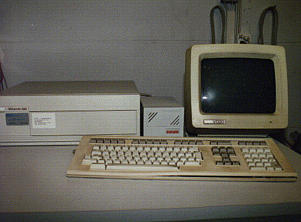 |
One of the last VAX-series, and the naming conventions went crazy: several MicroVAX and VAXstation models have the 3100 number, and sometimes it's not easy to tell them apart. They are microprocessor-based systems with SCSI strorage elements. A MicroVAX 3100 is a multiuser machine, a VAXstation 3100 is a graphical workstation, while the VAXserver is a MicroVAX 3100 with a single-interactive-user OS license (e.g. fileservers). There's also the Infoserver 100 and 150, which are MicroVAX 3100's designed for servicing CDROM's, tapes and disks to network cliens (this is useful for remote booting or OS install over the network). |
The first 3100 was the MicroVAX/VAXstation 3100 Model 10 and Model 20 with the KA440 processor, and with a performance of 3 VUPs. The later ones... I don't know, help me!
VAXstation 3100 Model 38
In the papers...
10e and 20e
Another Model 38
Model 38 opened
Model 88
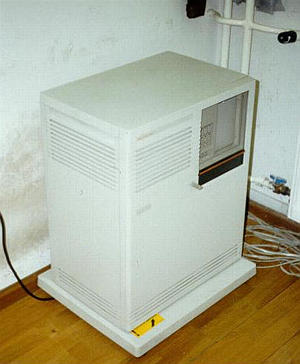 |
1989 saw the introduction of
the CVAX+ chip (an enhanced version of the CVAX), which formed the base
of the MicroVAX 3800/3900 and the VAX 6000-300. The KA655 CPU module of
the 3800/3900 was basically a re-engineered KA650. There is some confusion
just like with the MicroVAX 3500/3600:
|
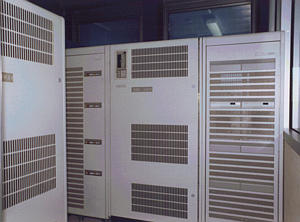 |
A new "data warehouse" machine with the CVAX+ chip and the XMI bus (80 MB/sec throughput). As you can see on the picture to the left, the different 6000 models shared the same enclosure, to enable quick upgrades. |
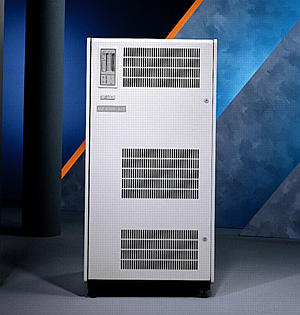 |
The 6000-400 used the new Rigel
chip, and introduced the necessary modifications in the VAX architecture
to enable vectorprocessing. This feature opened the market for scientific
applications; the vector-VAXen were sometimes labelled "VAXvector 6000-xxx.
6000-420 (with a MicroVAX
3600 in the foreground)
|
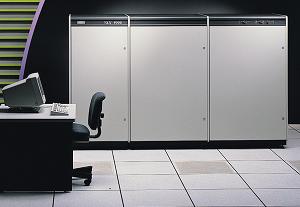 |
The flagship of Digital's technology of the time, that turned out to be a commercial flop. Anyhow, it's still a true mainframe, remarkable in any aspect: the system takes up a whole room, it consumes electricity as if it was free, and dissipates heat like hell. All this is due the fact that it's built out of ECL components, which are very fast (CMOS wasn't even close to that at that time), but draw very much power (the whole system takes around 20 kW). It was designed to have water-cooling, but it didn't work, so they modified it to air-cooling, the name however remained: "Aquarius". There were different models, with performances varying from 40 to 157 VUPs (125 MFLOPS). The I/O-memory-CPU interconnect is switched (with a frequency of 1 GHz), which was a totally new concept at that time IIRC (SGI/Cray has machines like that now, but remember, this was in 1989!). There were only a few dozen 9000's ever made, and perhaps only one or two are still operational. |
The dream of a machine room:
VAX 9000-410, HSC's and disk arrays
9000-410
9000-410 pt II.
9000 CPU opened (the
small rectangular things are heatsinks; the blue things are the power lines
(one of them is 160A@3.4V), and you can also see the console's RD54 disk
from which the CPU loads the microcode, and the service TK50 unit)
9000 front-end computer
(a VAXBI-based system)
Misc
DECwindows: Digital's standard X windowing system-compliant graphical interface for VMS and Ultrix.

